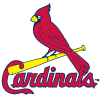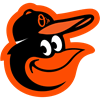In this series, as we open up the final month of the season, I usually start to trend toward looking to next year. The year 2020 won't be a 100 percent focus of the rest of these articles this month, but for a large number of you, you're already looking to 2020 (or to your fantasy football teams), so we'll focus on that a bit more this month. I'll still provide some advice on guys who can help you win this year (probably in next week's article), but for now, here are some players who've been hot lately and positioned themselves to be taken much higher in 2020 drafts than we would have thought in the first half of this year.
Kyle Seager : 3B
: 3B
Last 30 days: .313/.400/.708, 10 HR
Overall, Seager is still batting a modest .250/.329/.500, but considering he was hitting .186/.260/.331 on July 21, it's been a remarkable turnaround. Prior to late-July, it simply appeared that Seager's downward spiral was carrying over from 2018. That year, Corey's older brother batted just .221/.273/.400 after peaking in 2016 with a .278/.359/.499 triple slash. Seager's 9.9 percent BB percentage is his best mark since 2016, and his hard-hit rate is up a couple points, while his barrel percentage is up from 5.6 to 8.9 year over year. At this rate, Seager is probably trending toward top-15 third baseman value. He'd easily be that if I felt comfortable projecting him to hit .275 over a full season, but we need
In this series, as we open up the final month of the season, I usually start to trend toward looking to next year. The year 2020 won't be a 100 percent focus of the rest of these articles this month, but for a large number of you, you're already looking to 2020 (or to your fantasy football teams), so we'll focus on that a bit more this month. I'll still provide some advice on guys who can help you win this year (probably in next week's article), but for now, here are some players who've been hot lately and positioned themselves to be taken much higher in 2020 drafts than we would have thought in the first half of this year.
Kyle Seager : 3B
: 3B
Last 30 days: .313/.400/.708, 10 HR
Overall, Seager is still batting a modest .250/.329/.500, but considering he was hitting .186/.260/.331 on July 21, it's been a remarkable turnaround. Prior to late-July, it simply appeared that Seager's downward spiral was carrying over from 2018. That year, Corey's older brother batted just .221/.273/.400 after peaking in 2016 with a .278/.359/.499 triple slash. Seager's 9.9 percent BB percentage is his best mark since 2016, and his hard-hit rate is up a couple points, while his barrel percentage is up from 5.6 to 8.9 year over year. At this rate, Seager is probably trending toward top-15 third baseman value. He'd easily be that if I felt comfortable projecting him to hit .275 over a full season, but we need more data to get comfortable with thinking he's more than a .250 hitter.
Last 30 days: .347/.433/.644, 7 HR, 10 SB
Villar is 28 with one more season (2020) before free agency, making him an appealing trade candidate this winter, but also a potential building block should the Orioles look to extend his contract. Overall, Villar has put up an elite season, fantasy or otherwise, batting .278/.347/.462 with 20 home runs and 33 stolen bases. For a guy on pace to hit around .280 with 25 home runs and 40 steals to have an 80 ADP means that Villar isn't unique among fantasy teams that rank at or near the top of the standings. It's been a remarkable turnaround for a guy who hit a combined .251/.310/.379 the previous two seasons. His 24.3 K percentage remains a bit high, but it's much improved over the past two seasons. It's helped some that Villar's FB percentage is up from 21.9 in 2017 to 29.1 percent this year, and while a 5.9 degree launch angle is still relatively low, it's way up from last year's 2.7. Villar probably has another couple elite SB seasons ahead of him, but once those start dropping, he could grow into 30 HR power.
Last 30 days: .324/.395/.775, 14 HR
This is a guy I'd never heard of before recently. Perhaps I would have had I been a Reds fan, but even that group couldn't have been too excited about a guy who hit a combined .227/.293/.421 as a 23/24 year-old in Double-A the past two seasons. This year the Reds challenged him with a Triple-A promotion, and he responded with a .299/.356/.636 start there this year with 28 home runs in 78 games. The Reds, however, couldn't have expected his first 120 big league PAs to yield a 1.106 OPS and 14 home runs. His emergence allowed the Reds to acquire Trevor Bauer and not lose any offense with Yasiel Puig's departure. Aquino now looks like a building block middle-of-the-order threat for the next Reds' contender.
Last 30 days: .271/.412/.563, 8 HR
While Donaldson was trying to keep his BA above .240 in April, and Austin Riley was killing the ball in Triple-A, Braves fans were bemoaning the $23 million handed to Donaldson over the winter and wishing it had been allocated to the bullpen. Not so much now, as Donaldson has a .904 OPS and 33 home runs, evoking memories of his 2015 MVP season, leading fans to call for Donaldson to get an extension this winter. He's also posted a 19.3 BB percentage over the last 30 days and looks as locked in as ever at the plate. He's also on pace to play in more than 150 games after combining for just 165 the past two seasons. He should make a nice consolation prize for whichever team doesn't secure Anthony Rendon's services in free agency this winter.
Mark Canha : OF
: OF
Last 30 days: .316/.407/.561, 6 HR
A lefty masher last year (.982 OPS), Canha batted just .227/.323/.343 against right-handers last year, but he's obviously made adjustments, as he's hitting .294/.406/.579 against righties this year, allowing him to slide into an everyday role. Canha's 23 home runs are a career-high, and he'd certainly be a lock to finish in the 30 to 35 range had he been starting regularly from Opening Day on. Canha is a 2015 Rule 5 draft pick by the A's (from Miami), and he's evolving into one of the better Rule 5 finds in baseball history (might be tough to top Roberto Clemente and Johan Santana, however). Canha is already 30, so his peak could be coming soon, but he's built himself into a nice player.
Last 30 days: .342/.376/.712, 11 HR
What a difference a better lineup, change of scenery and a hitter-friendly ballpark make. Acquired at the July 31 deadline from the Tigers, Castellanos was batting a modest .273/.328/.462 at the time, but he looks revitalized, and just in time to hit free agency this winter. Guy has to be thanking his lucky stars for this trade. His 4.8 BB percentage with the Cubs isn't what we'd like to see, but I suppose we can overlook that given he's hitting .336/.373/.689 in the National League. Castellanos turns 28 in March, so he's right in his prime, so despite well below average defense, he should be in line for a nice contract this winter.
Last 30 days: 31 IP, 0.87 ERA, 11.0 K/9, 2.0 BB/9
Flaherty posted a 5.34 ERA last September, but he's looking for a much better finish in 2019. We had Flaherty as the No. 28 SP prior to drafts this season, but he's now looking more like a top-10 or at worst, top-15 guy headed into 2020. What's scary is that his upside may be even higher. Both Flaherty's fastball and slider grade out as well above average, but his curve and change both show as below average on FanGraphs. What happens if he works on those offerings over the offseason and comes back having added even more velocity to his fastball (its up 1.1 mph this year on average)? We would probably then have a top-five starter. That's the sort of ceiling this guy has. Flaherty's 37.7 GB percentage is down from prior seasons as well, so that's another category in which he can improve.
Last 30 days: 30.2 IP, 2.35 ERA, 7.0 K/9, 0.9 BB/9
Civale has risen from obscurity to be one out away from posting quality starts in all six of his first big league starts. With a 1.96 ERA in 36.2 innings, the 24-year-old right-hander has been incredible in filling a rotation spot after the Trevor Bauer deal. Civale had a 2.35 minor league ERA in 13 starts split between Double-A and Triple-A, so that momentum has certainly carried over. He wasn't considered much of a prospect prior to this year, having posted a 3.89 ERA and 6.6 K/9 last year in Double-A, but his stuff and control have taken a step forward this year. He's not a hard thrower, averaging 92.8 mph with his fastball, but his 1.5 BB/9 and 0.25 HR/9 are certainly helping. His 40.8 GB percentage isn't anything special, so that sort of HR rate isn't sustainable, but Civale seems like he's done enough to stick in the rotation long-term, even once Corey Kluber (oblique) returns later this month or in 2020.
Last 30 days: 30 IP, 1.50 ERA, 9.9 K/9, 0.6 BB/9
After functioning as a long man or opener for most of the year, Yarbrough has made four consecutive "traditional" starts and now appears settled into that role. Yarbrough isn't a huge strikeout guy, averaging just 88.3 mph with his fastball, but he's put up some excellent numbers regardless – 3.36 ERA, 0.87 WHIP and 98:14 K:BB in 115.1 innings. In his last four starts though, he's ramped it up, posting a 1.14 ERA and ridiculous 28:1 K:BB in 25.1 innings. Further, in his last 52 innings, Yarbrough has a 1.90 ERA and 51:3 K:BB in 52 innings. Elite stuff. When we wrote about Yarbrough way back in 2016, we pegged him as a No. 5/long man type of guy, primarily due to his inability to light up the radar gun, but he's locked in right now and increasing his 2020 value with every start.
Last 30 days: 10.2 IP, 0.84 ERA, 16.9 K/9, 0.0 BB/9
I'm just trying to figure out how a guy with a 14.8 K/9 and 2.6 BB/9 has a 3.25 ERA, but that's Anderson. His 2.22 FIP speaks more to how he's pitched this year, and since coming over from the Marlins, Anderson has been ridiculous, allowing just one run in 11.2 innings with a 22:0 K:BB. Anderson had a 13.2 K/9 and 2.9 BB/9 last year in Triple-A, and he's been able to sustain that success at the big league level. Anderson's 18.2 percent swinging strike rate ranks fourth among all relievers, behind that of Josh Hader, Ken Giles and, interestingly, Robert Stephenson. That's legitimate late-inning stuff. At this point, Anderson looks to be behind Emilio Pagan, and when healthy, Jose Alvarado (elbow) in the closer pecking order, but that could certainly change headed into 2020.





 :
: :
: :
: :
: :
: :
: :
: 




























